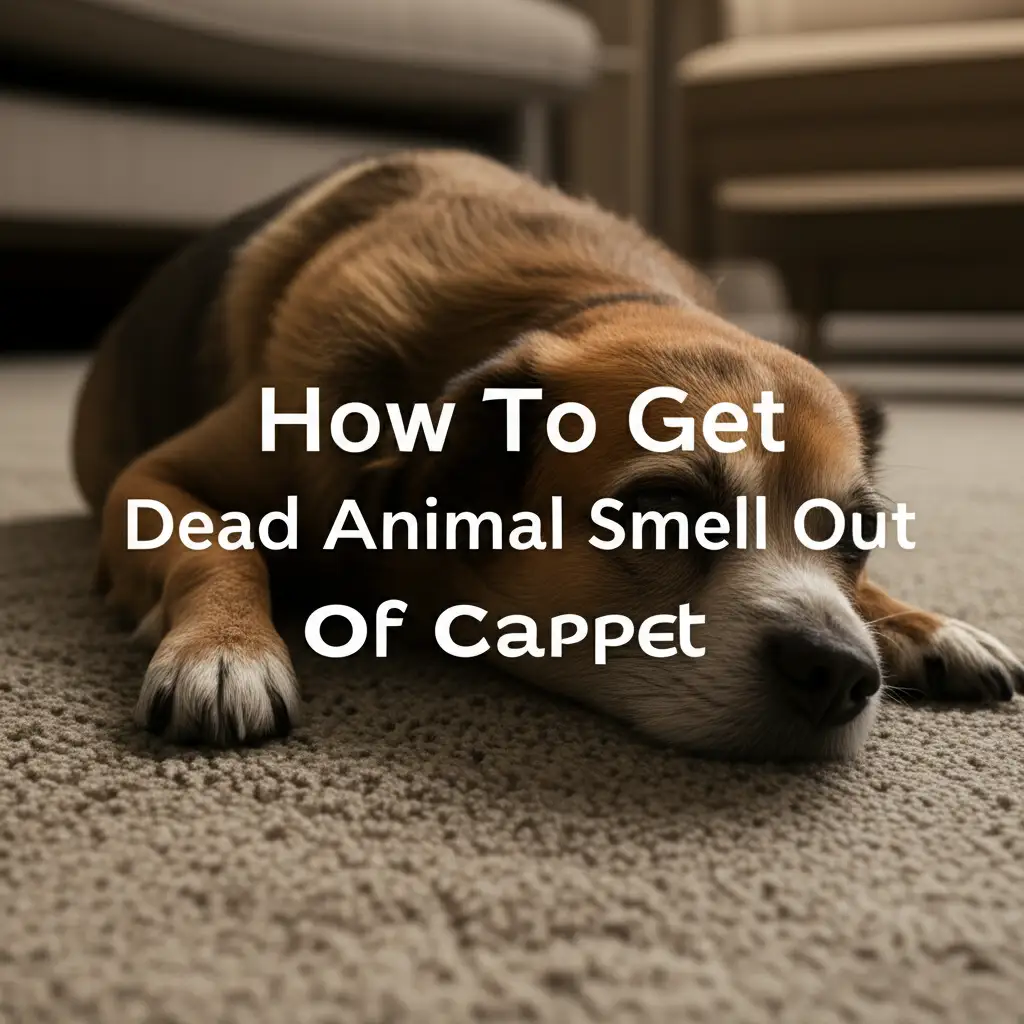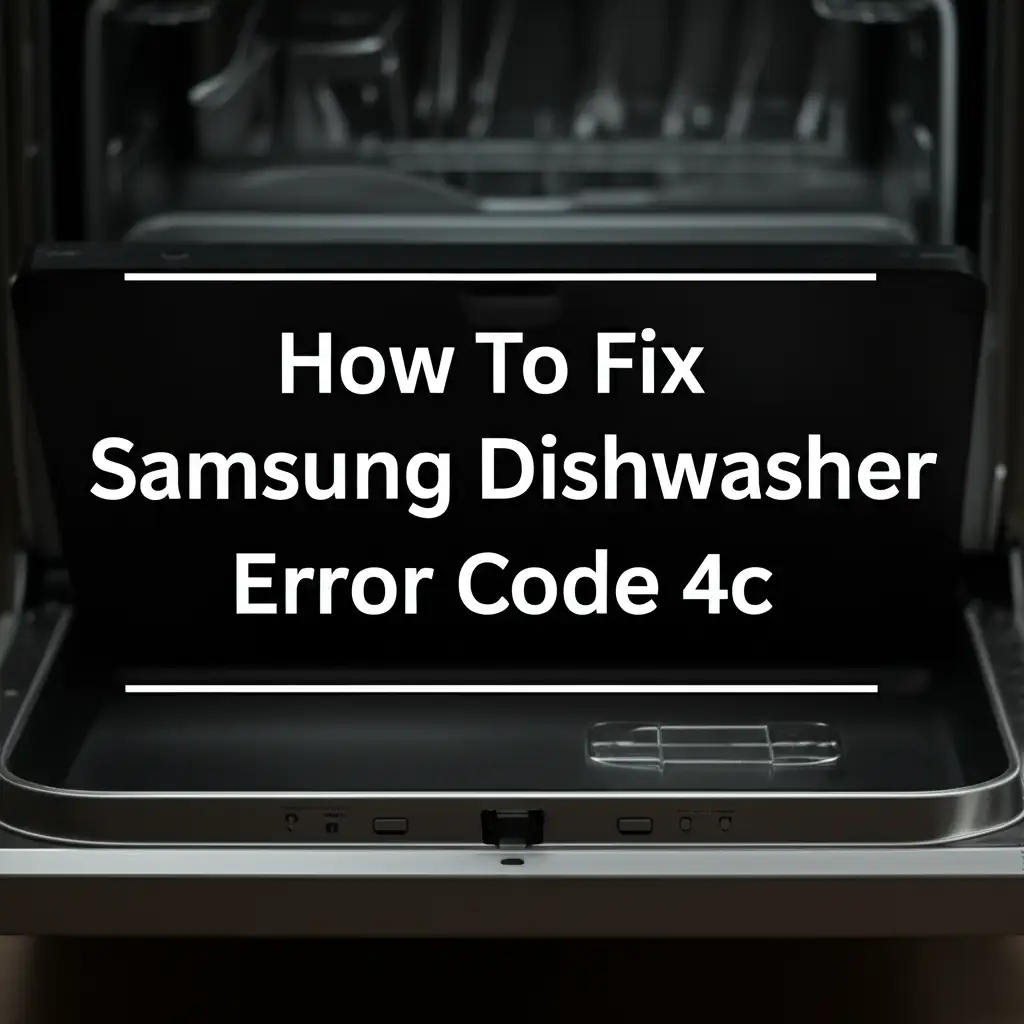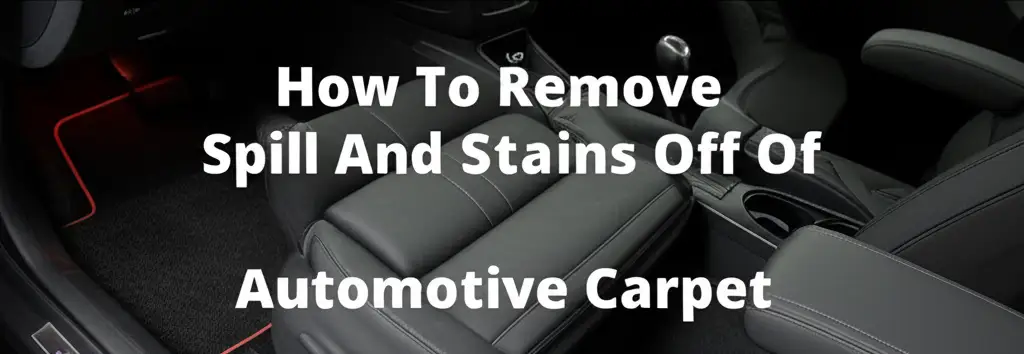· Elira Thomsen · Home Cleaning · 16 min read
How To Get Dead Animal Smell Out Of Carpet

Banishing Dead Animal Odor from Your Carpet
Suddenly, an awful smell hits you. It is a foul, unmistakable odor that permeates your entire home. You quickly realize the source is not a leaky drain or spoiled food. It is the distinct, repulsive smell of a dead animal. More specifically, the smell seems to be coming from your carpet. Getting a dead animal smell out of carpet is a challenging task, but it is possible with the right approach.
I understand this is a truly unpleasant situation. This comprehensive guide helps you tackle the problem head-on. We will explore how to identify the hidden source, detail the immediate steps for removal, and provide deep cleaning methods that truly work. We will also discuss natural remedies and advise when to seek professional help. Finally, we will cover strategies to prevent such incidents in the future.
Takeaway:
- Locate the source: Find the deceased animal or its affected area quickly.
- Remove and clean: Safely dispose of the animal, then clean the carpet surface.
- Deep treat: Use enzymatic cleaners and odor neutralizers to break down organic matter.
- Aerate and dry: Ensure proper ventilation and thorough drying to prevent mold and lingering odors.
How do you get dead animal smell out of carpet?
To get dead animal smell out of carpet, first, locate and safely remove the animal. Then, thoroughly clean the affected area using an enzymatic cleaner. Apply the cleaner generously, allow it to dwell, then blot it dry. Follow up with baking soda and ensure proper ventilation to absorb lingering odors.
Identifying the Unpleasant Source: Where is the Dead Animal?
Discovering the source of a dead animal smell is the first critical step. Without finding it, you cannot truly remove the odor. The smell can travel, making pinpointing the exact location tricky. Sometimes, the animal is not directly on the carpet, but the odor has soaked into the fibers nearby.
Common Hiding Spots for Unwanted Guests
Small animals often seek secluded, quiet places when they are sick or injured. These hidden spots become common places for them to die. You might find a rodent inside a wall cavity. It could be a bird in an unused chimney or vent. Sometimes, an animal crawls under furniture or deep into a closet. Look under heavy appliances like refrigerators or stoves. Check behind baseboards or inside crawl spaces. These areas offer shelter but become odor traps when an animal dies there.
Using Your Senses: Smell and Other Clues
Your nose is your primary tool for locating the source. The smell will be strongest closest to the deceased animal. Move slowly through your home, sniffing carefully. Pay attention to how the intensity of the smell changes. Does it get stronger near a specific wall or corner? Are flies gathering in one area? Flies are a strong indicator of a decaying carcass. You might also notice dark, moist spots on your carpet or drywall. These stains suggest bodily fluids have seeped out. These visual clues, combined with the smell, help you narrow down the search. Finding the source quickly stops further contamination and makes cleaning easier.
The Importance of Swift Location
Locating the dead animal quickly is crucial for several reasons. The longer a carcass remains, the more intense and pervasive the smell becomes. Bodily fluids can seep into your subflooring, drywall, or structural elements. This causes long-term damage and creates a permanent odor problem. Early detection allows for faster removal and limits the spread of bacteria and odors. It also prevents attracting other pests, like insects or maggots, to the decomposing matter. Swift action protects your home and your health.
Immediate Actions and Safe Carcass Removal Strategies
Once you locate the deceased animal, immediate action is necessary. Safety is your top priority during this unpleasant task. Proper removal limits further contamination and reduces health risks. You must prepare for safe handling and disposal.
Personal Protection and Ventilation
Before you touch anything, protect yourself. Wear heavy-duty gloves, preferably disposable ones. A face mask helps block the foul odor and prevents inhaling airborne particles. Consider wearing old clothes you can wash immediately after or dispose of. Open all windows and doors in the affected area. Good cross-ventilation helps dissipate the odor. It also helps air out the space. If available, use fans to direct air outside. This step is critical for your comfort and safety. Do not underestimate the unpleasantness of this task.
Gentle Removal and Disposal
Carefully pick up the dead animal. Avoid direct skin contact. Use a shovel, scoop, or several layers of paper towels. Place the animal into a heavy-duty plastic bag. Double-bag it for extra security. Tie the bags securely to prevent any leakage or further odor escape. Dispose of the bag in an outdoor trash can. Make sure the trash can has a tight-fitting lid. This prevents other animals from getting into it. You want to keep the smell contained as much as possible. If the animal is large, or if you cannot remove it yourself, call animal control or a professional pest removal service.
Initial Cleanup: Surface Level Stain and Residue
After removing the carcass, focus on the immediate area. The carpet may have visible stains or residue. This is often from bodily fluids. Use paper towels to blot up any liquid. Do not rub, as this pushes the contamination deeper into the carpet fibers. Mix a solution of one part white vinegar to two parts water. Lightly spray this solution on the visible stain. Blot again with clean paper towels. This helps neutralize some immediate odor. It also lifts surface residues. This initial cleaning step prepares the carpet for a deeper, more effective treatment. This early action also helps to contain the spread of the problem. If you need to tackle other pet-related odors, remember similar principles apply. Learn how to remove pet pee smell from carpet for further guidance on organic stains.
Deep Cleaning Carpet Fibers: Tackling the Putrid Odor
After initial cleanup, a deep cleaning process is vital. This step targets the odor-causing bacteria and organic matter embedded in the carpet fibers. Surface cleaning alone will not eliminate the deep, putrid smell. You need to break down the source of the odor at a molecular level.
The Power of Enzymatic Cleaners
Enzymatic cleaners are your best weapon against dead animal odors. These cleaners contain special enzymes. These enzymes literally “eat” organic matter. They break down proteins, fats, and other compounds found in bodily fluids. This process eliminates the source of the smell, not just masking it. Standard carpet cleaners often cannot handle such severe organic stains. Enzymatic cleaners are designed for bio-based odors. Look for products specifically labeled for pet stains and odors. They are highly effective for urine, vomit, and decomposition byproducts. Understanding how carpet cleaning works in general helps appreciate the targeted action of enzymatic cleaners.
Application Techniques for Maximum Effect
Applying the enzymatic cleaner correctly ensures the best results. First, test the cleaner on an inconspicuous area of your carpet. This checks for colorfastness. Next, generously saturate the affected area with the enzymatic cleaner. The cleaner must reach as deep as the contamination. Use enough product to soak through the carpet backing. Let the cleaner dwell for the time recommended on the product label. This typically ranges from 15 minutes to several hours. For severe odors, you might need to cover the area with plastic wrap. This keeps the cleaner moist and active for longer. After dwelling, blot the area with a clean, white towel. Do not rub. You want to absorb the liquid, not spread it. Repeat this process if the smell persists. Getting out deep grime requires patience. For similar challenges, you might find tips on how to get deep grime out of carpet helpful.
The Crucial Drying Process
Proper drying is just as important as cleaning. If the carpet remains damp, mold and mildew can grow. This creates new odors and health hazards. After blotting, use a wet/dry vacuum to extract as much liquid as possible. Place fans directly on the treated area. A dehumidifier also helps speed up drying. Open windows to improve air circulation. Avoid walking on the wet area until it is completely dry. This prevents re-soiling and permanent damage to carpet fibers. Drying can take 24-48 hours. Ensure the area is bone dry before you consider the job complete. Any moisture left behind can reactivate dormant odors or cause new problems.
Natural Remedies and Persistent Odor Neutralization
Sometimes, a lingering dead animal smell persists even after deep cleaning. This can happen if the odor penetrated deeply or if spores remain. Natural remedies can help absorb and neutralize these stubborn smells. They offer a chemical-free alternative or a supplementary treatment.
Baking Soda: Your Go-To Odor Absorber
Baking soda is a powerful natural odor absorber. Its chemical structure allows it to neutralize acidic and basic odor molecules. After your carpet is completely dry from the enzymatic cleaning, generously sprinkle baking soda over the affected area. Really cover it well. You can use a whole box or more depending on the size of the area. Leave the baking soda on the carpet for several hours, or even overnight. The longer it sits, the more odor it absorbs. Then, vacuum up the baking soda thoroughly. You might need to vacuum multiple times to remove all residue. This method helps pull out residual odors. It leaves your carpet smelling fresher.
Vinegar: An Acidic Odor Buster
White vinegar is another excellent natural deodorizer. Its acetic acid helps break down odor-causing compounds. Mix equal parts white vinegar and water in a spray bottle. Lightly mist the affected carpet area. Be careful not to over-saturate. Let the solution air dry. The vinegar smell itself will dissipate as it dries. As it evaporates, it carries away bad odors. You can also dampen a clean cloth with the vinegar solution. Blot the area to treat it. Always test vinegar on a hidden spot first to ensure it does not affect your carpet’s color. Vinegar is surprisingly versatile. It can even take out other tough carpet stains like beer. For more on using vinegar for stains, check out can vinegar take out beer in carpet.
Activated Charcoal and Other Absorbers
Activated charcoal is highly porous. This makes it incredibly effective at absorbing odors from the air. Place bowls of activated charcoal near the treated carpet area. Do not place it directly on the carpet, as it can stain. You can also use coffee grounds for a similar effect. Coffee grounds not only absorb odors but also release their own pleasant scent. Just like charcoal, place them in bowls or shallow dishes. Ensure they are in a location where they cannot spill onto the carpet. Leave them in place for a few days. Replace them as needed until the odor completely disappears. These methods help clear the air. They tackle any lingering smell particles.
Professional Help for Persistent Dead Animal Odor
Sometimes, despite your best efforts, the dead animal smell just won’t go away. This is often because the odor has deeply penetrated multiple layers. It might be in the subfloor, padding, or even wall structures. At this point, it is wise to consider professional help. Professionals have specialized tools and stronger chemicals. They can reach areas you cannot.
Signs Your DIY Efforts Are Not Enough
You have tried everything. You found the animal, cleaned the spot, used enzymatic cleaners, and tried natural remedies. Yet, a faint but persistent dead animal smell remains. This is a clear sign. Another indicator is if the smell spreads to other rooms. This means it is likely airborne or has seeped into deeper materials. If you suspect the animal died inside a wall or vent, and you cannot access it, professionals are necessary. Sometimes, the source is simply too large or too deeply embedded for a DIY approach. These are situations where you should definitely call for expert assistance.
What Professional Odor Removal Entails
Professional odor removal services use industrial-grade equipment. They have powerful extractors and specialized cleaning agents. These are often stronger than what you can buy at a store. They may use ozone generators or thermal foggers. Ozone treatments oxidize odor molecules. Thermal fogging creates a fine mist of deodorizing agents. This mist penetrates hard-to-reach areas. They can also remove and replace sections of carpet padding or even subfloor if needed. They are trained to identify and eliminate the source of the odor completely. They also ensure no residue is left behind. This provides a truly clean and fresh environment. If you want to know more about how professionals handle carpet issues, you can research how to get business carpet cleaner type services.
Considering Carpet Replacement
In severe cases, complete carpet replacement might be the only solution. This is especially true if the dead animal was large. It is also a consideration if the carcass was left for a long time. The smell might have saturated the carpet fibers, padding, and subfloor beyond repair. Professionals can assess the damage. They tell you if replacement is needed. They remove the old carpet and padding. They then treat the subfloor and any affected wall areas. Only after thorough cleaning of the underlying structure should new carpet be installed. While costly, it guarantees complete odor elimination. It also restores your home’s freshness. This step removes the root of the problem for good. If you are also dealing with other animal odors, like a persistent dog smell in your vehicle, methods for removal can sometimes overlap. Learn about how to get dog smell out of cars carpet for comparative insights.
Preventing Future Encounters and Maintaining a Fresh Home
Once you successfully eliminate the dead animal smell, you want to ensure it never happens again. Prevention is always easier than dealing with an active problem. Taking proactive steps protects your home from future unwanted visitors and their unfortunate demise.
Sealing Entry Points and Pest-Proofing
Animals often enter homes through small cracks and openings. Check your foundation for any gaps. Look around pipes where they enter the house. Inspect windows and doors for loose screens or damaged seals. Use caulk, steel wool, or mesh to seal these entry points. Rodents can squeeze through incredibly small spaces. Even a tiny gap can be an invitation. Repair any holes in your roof or attic. Cap unused chimneys. These actions block common routes for pests. This reduces the chance of an animal getting trapped inside your home.
Regular Inspections: A Proactive Approach
Make it a habit to inspect your home regularly. Do a quick check of your attic, basement, and crawl spaces. Look for signs of animal activity. This includes droppings, gnaw marks, or nests. Listen for scratching or scurrying noises in walls or ceilings. Early detection of a live animal allows you to remove it before it becomes a problem. This prevents a potential dead animal scenario. A proactive approach means you catch issues when they are small. This saves you from future headaches and unpleasant smells.
General Home Hygiene for Odor Prevention
Maintaining a clean and tidy home also plays a role in prevention. Store food in sealed containers. Clean up spills promptly. This eliminates food sources that attract pests. Keep your yard tidy. Trim bushes away from your house. Remove debris piles that provide shelter for animals. Good hygiene reduces the appeal of your home to unwanted guests. It also promotes a generally fresh-smelling environment. A clean home is a less inviting place for pests. This helps prevent the awful smell of a dead animal from ever returning.
FAQ Section
Q1: How long does dead animal smell last in carpet?
The dead animal smell in carpet can last for weeks to months. It depends on factors like the animal’s size, decomposition stage, and how deeply fluids soaked into the carpet. Removing the carcass quickly and thoroughly cleaning the area is crucial. The odor will linger until the organic matter causing it is fully broken down and removed.
Q2: Can dead animal smell make you sick?
Yes, dead animal smell can make you sick. The odor comes from gases produced by decomposition and bacteria. While the smell itself is unlikely to cause serious illness, inhaling it for extended periods can cause nausea, headaches, and respiratory irritation. The presence of a dead animal also means potential exposure to pathogens, parasites, or insects.
Q3: What if I can’t find the carcass?
If you cannot find the carcass, the smell will eventually dissipate on its own, but it will take time. You can use odor neutralizers like baking soda or activated charcoal to absorb the airborne smell. For persistent odors, consider calling a professional pest control service. They use specialized equipment to locate hidden carcasses in walls or crawl spaces.
Q4: Should I replace the carpet if the smell persists?
You might need to replace the carpet if the dead animal smell persists despite thorough cleaning. This indicates the odor has saturated the carpet fibers, padding, and possibly the subfloor. A professional assessment can determine if replacement is necessary. Replacing the affected sections ensures complete odor elimination.
Q5: Is bleach safe for dead animal smell on carpet?
Bleach is generally not safe or recommended for dead animal smell on carpet. Bleach can damage carpet fibers, causing discoloration or weakening them. It may also react with the organic matter, creating harmful fumes. Stick to enzymatic cleaners. These are specifically designed to break down organic odors safely and effectively.
Q6: How does enzymatic cleaner work on dead animal smell?
Enzymatic cleaners contain beneficial bacteria that produce enzymes. These enzymes break down complex organic molecules, like those found in decomposing matter and bodily fluids, into simpler compounds. This process eliminates the food source for odor-producing bacteria. It effectively neutralizes the smell at its source, rather than just masking it.
Conclusion
Facing a dead animal smell in your carpet is truly unpleasant. However, you now have a clear roadmap to tackle this problem effectively. We covered how to find the source of the odor. We discussed the important steps for safe removal. You learned about deep cleaning with enzymatic solutions. We explored natural remedies for lingering smells. We also addressed when professional help becomes necessary.
Remember, prompt action is key to containing the problem. Proper cleaning and ventilation ensure the odor is gone for good. By following these steps, you can successfully get dead animal smell out of carpet. You restore freshness and comfort to your home. Take a deep breath, and begin the process of reclaiming your living space.





